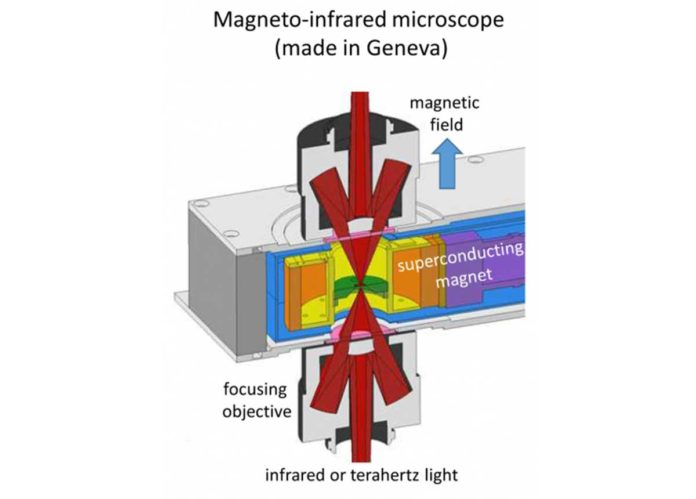Controlling infrared and terahertz waves using magnetic and electric fields is one of the extraordinary difficulties in physics that could revolutionize optoelectronics, telecommunications, and medical diagnostics.
A hypothesis from 2006 predicts that it should be possible to use graphene – a monoatomic layer of carbon atoms- in a magnetic field not exclusively to absorb terahertz and infrared light on interest yet in addition to control the heading of the circular polarization.
Now, scientists at the University of Geneva (UNIGE), Switzerland, and the University of Manchester have tested this theory and achieved the predicted results. They found an efficient way to control infrared and terahertz waves. It likewise demonstrates that graphene is keeping its initial promises, and is advancing toward being the material of the future, regardless of whether on earth or in space.
Alexey Kuzmenko, a researcher in the Department of Quantum Matter Physics in UNIGE’s Science Faculty, said, “There exist a class of the so-called Dirac materials, where the electrons behave as if they do not have a mass, similar to the light particles, the photons. One of such materials is graphene, a monolayer of carbon atoms arranged in a honeycomb structure, analog to graphite used, in particular, to make pencils.”
“The interaction between graphene and light suggests that this material could be used to control infrared and terahertz waves. That would be a huge step forward for optoelectronics, security, telecommunications, and medical diagnostics.”
Alexey Kuzmenko said, “A theoretical prediction from 2006 posited that if a Dirac material, is placed in a magnetic field, it will produce a powerful cyclotron resonance. When a charged particle is in the magnetic field, it moves on a circular orbit and absorbs the electromagnetic energy at the orbiting, or cyclotron, frequency, for example, it happens in the Large Hadron Collider at CERN. And when the particles have a charge but no mass, as electrons in graphene, the absorption of light is at its maximum!”
Such maximum absorption requires pure graphene, which makes electrons flow long distances without scattering impurities or crystal defects. To obtain this pure graphene, scientists collaborated with the group from the University of Manchester and developed pure graphene samples.
These samples were incredibly huge for this sort of graphene, where all things considered too small even to find quantifying the cyclotron resonance with well-established strategies. This is the reason the Geneva scientists fabricated an exceptional experimental setup to think the infrared and terahertz radiation on small samples of pure graphene in the magnetic field.
Alexey Kuzmenko said, “The results demonstrated for the first time that a huge magneto-optical effect occurs indeed if a layer of pure graphene is used. The maximum possible magneto-absorption of the infrared light is now achieved in a monoatomic layer.”
“Also, the physicists found that it was possible to choose which circular polarisation – left or right – should be absorbed. Natural or intrinsic graphene is electrically neutral and absorbs all the light, regardless of its polarisation. But if we introduce electrically charged carriers, either positive or negative, we can choose which polarisation is absorbed, and this works both in the infrared and terahertz ranges.”
“This ability plays a crucial role, especially in the pharmacy, where certain key drug molecules interact with light depending on polarization direction. Interestingly, this control is considered promising for the search of life on exoplanets, since it is possible to observe the signatures of the molecular chirality inherent in the biological matter.”
At last, the physicists found that to observe a strong impact in the terahertz range, it is sufficient to apply magnetic fields, which could be produced as of now by an inexpensive permanent magnet.
Since the hypothesis has been affirmed, the scientists will keep on taking a shot at magnetically adjustable sources and locators of terahertz and infrared light. Graphene keeps on astonishing them.
The study is published in the journal Nature Nanotechnology.
